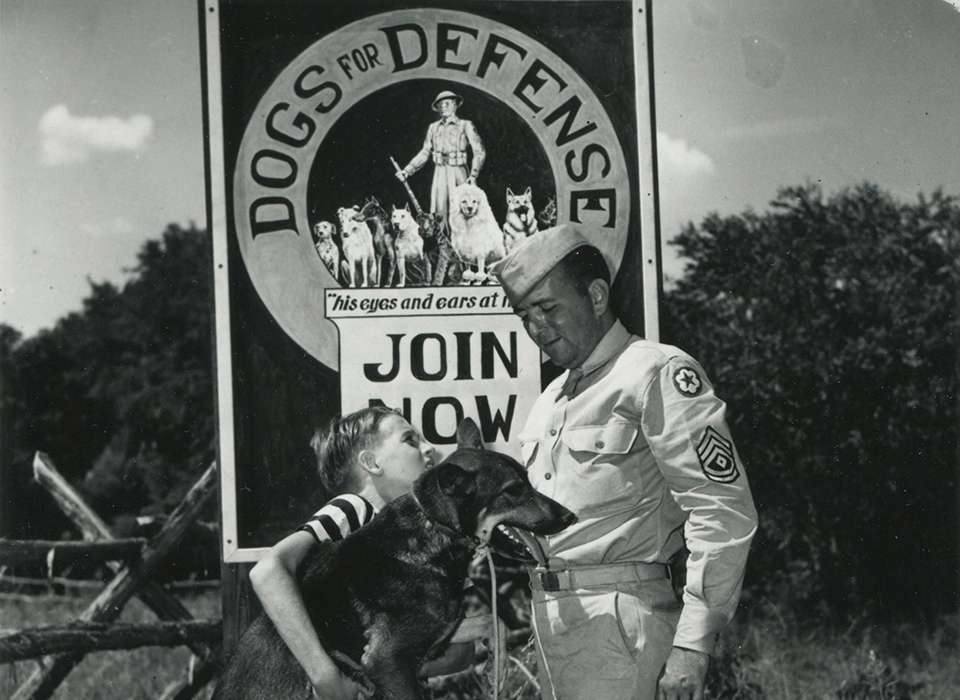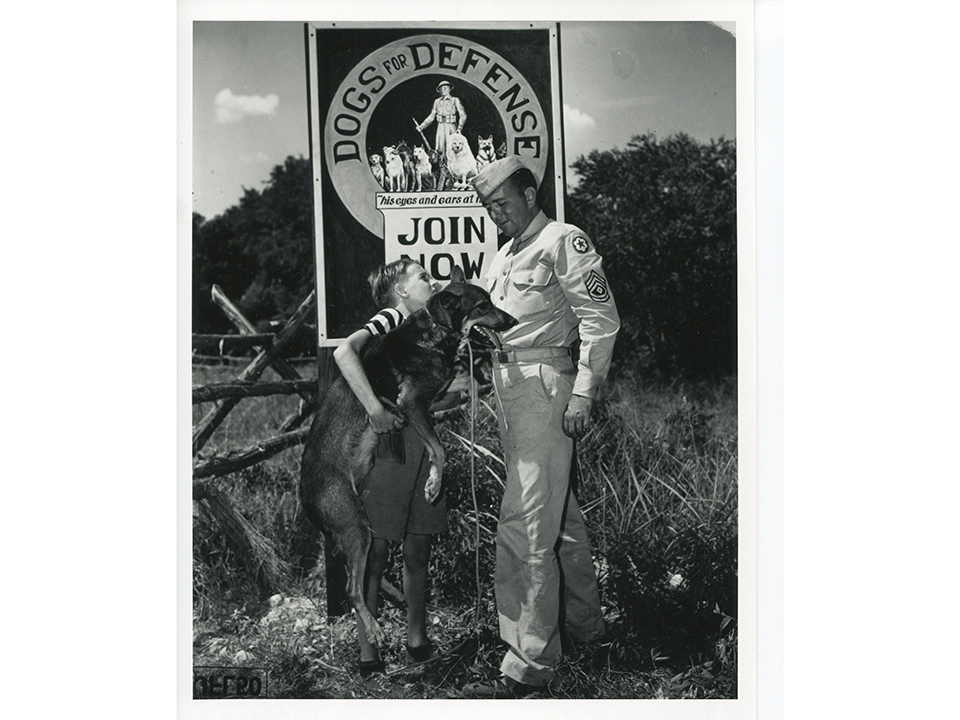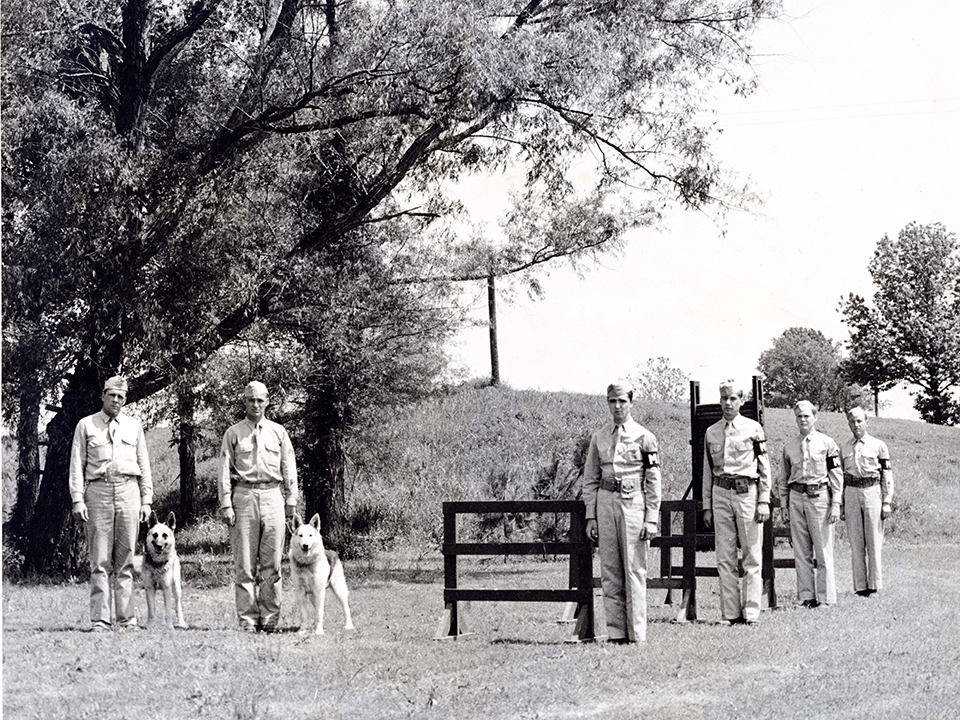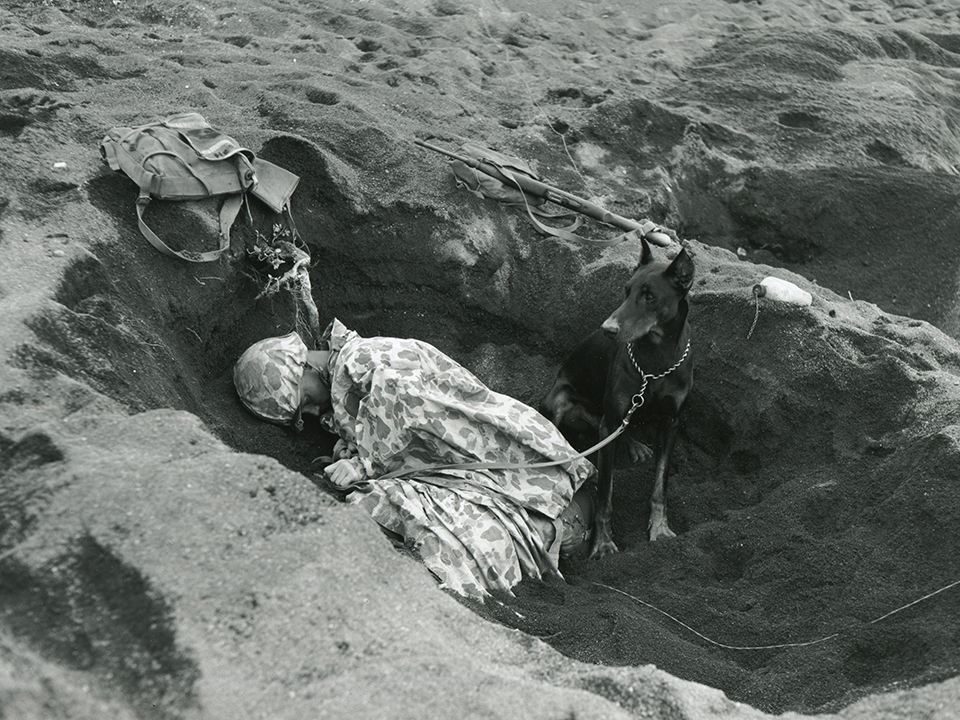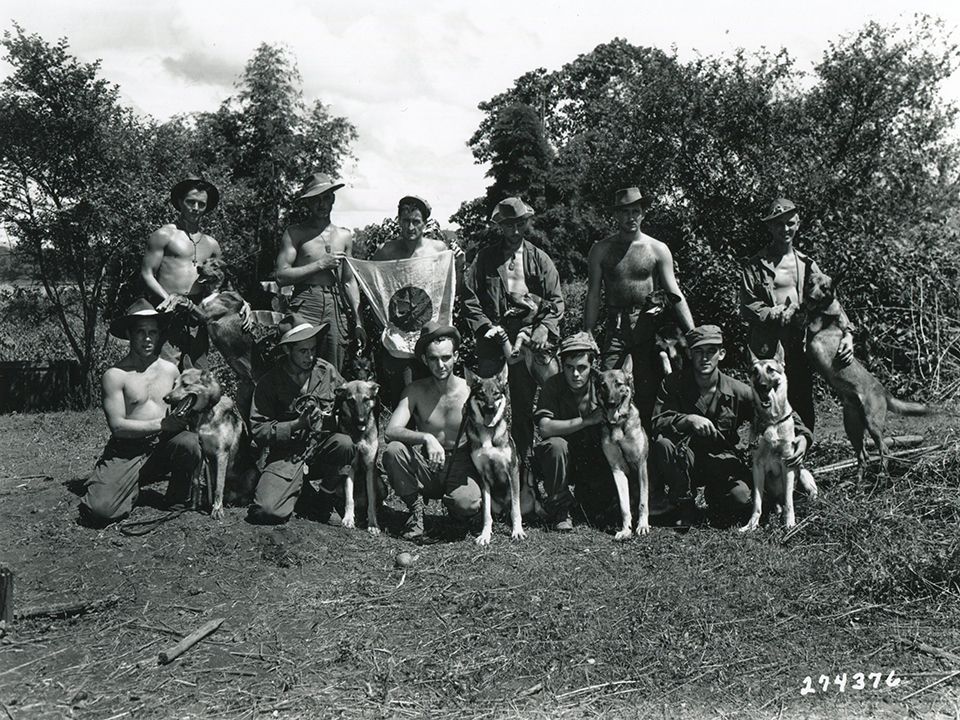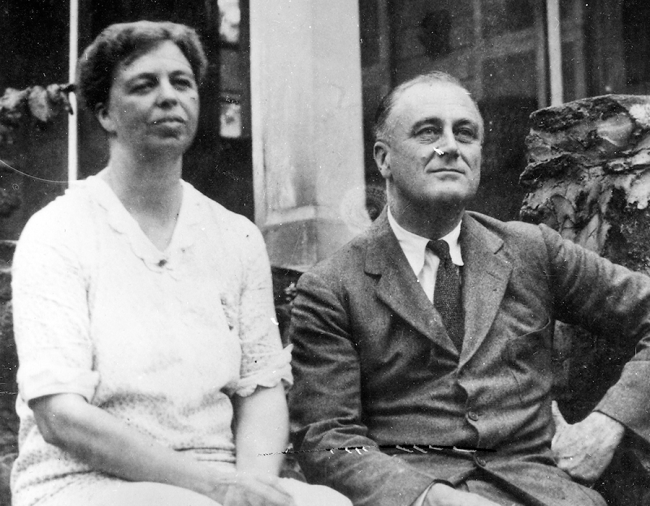For many of us dog lovers and dog owners it is hard to imagine volunteering your dog for military service. Nevertheless, at the outset of World War II, that is exactly what many Americans did. Through Dogs for Defense, established in 1942, 18,000 dogs were procured for military service. Many of these canine recruits belonged to everyday citizens wanting to help the war effort.
Clyde Porter gives his dog Junior to Dogs for Defense. Most of the United States' 20,000 war dogs were volunteered for service by their owners. National Archives photo.
In a typical situation, a patriotic owner would volunteer their dog for war service by contacting Dogs for Defense, which had many regional offices where dogs could be taken. Donated dogs were given a battery of medical tests to ensure they were fit for training and military duties. Dogs that did not pass the medical tests were returned to their owners; those that were selected were sent on to one of the Army or Marine Corps training centers. There, they would undergo more medical exams and intelligence testing. Dogs that passed were then assigned to a regiment and a handler to begin their military training.
All war-dog training began with basic obedience. Dogs had to know the elementary commands sit, stay, and heel. At first, these commands would be given verbally by the handler, but it was crucial that the dogs also learn to obey commands given with hand signals. In combat, any sound could alert the enemy to the presence of a patrol, so nonverbal communication between the dog and its handler was critical to their success. To this end, dogs were trained not to bark or growl. They were also trained on obstacle courses, where they were required to jump, climb, crawl, wade, and swim to reach their objective.
Military policemen and dogs pose on part of the training course all dogs had to complete to become war dogs. Courtesy Linda (Lindy) Harmon Good, in memory of Floyd Eugene Harmon, K-9 Corps, Fort Robinson, Nebraska.
After a dog had mastered basic obedience, it had to become accustomed to the various military procedures it would encounter. These ran the gamut from riding in jeeps and trucks to wearing a gas mask or a muzzle. One of the most important parts of the dog’s training was desensitizing the animal to rifle and artillery fire.
Once a dog completed basic obedience training, military procedure training, and noise desensitization, it began specialized training for its specific job. Dogs were screened to determine which job they were best suited to perform. Scout, sentry, and patrol dogs learned when to alert their handler to the presence of another person. Additionally, scout dogs learned how to work off leash. Central to training was the collar. The dog wore a certain type of collar while training or working and another type of collar while resting. Dogs soon learned the type of behavior expected of them by the specific collar worn.
There are numerous stories of how these dogs went on to prove vital in combat operations. Although initially shunned by fellow service men, dogs and handlers soon demonstrated their skills saving many soldier and Marine lives. By the time American troops reached the Philippines in January 1945, dogs were in great demand. Everyone wanted to go on patrol with a war dog and to have one in the foxhole next to him.
PFC Rez P. Hester of the US Marine Corps’ 7th War Dog Platoon on Iwo Jima takes a nap while Butch stands guard. Trained and sent into battle together, war dogs and their partners developed mutual loyalty, protectiveness, and love. National Archives photo.
Interestingly enough though, when the dogs were recruited, owners were promised return of their dogs if they survived the war. And that promise proved difficult for the US Military to fulfill. They did not anticipate the thousands of hours of retraining needed and the cost that such a promise would require. But through the work of Lt. William Putney and Maj. Harold C. Gors, dogs were given demilitarization training and sent home.
Putney, who proved his mettle as the commander of the 2nd and 3rd Marine War Dog Platoons, was appalled to learn that and before he could object several Marine war dogs had been euthanized in the Pacific. He believed that with proper demilitarization all the dogs could return to a civilian life. He therefore refused to sign a single dog's death certificate until he was certain that every effort had been made to retrain the dog. Of the 559 marine war dogs living at the end of the war, 540 were returned to civilian life. Of the 19 others, only four were unable to be retrained. The other 15 were euthanized because of health problems.
Dogs for Defense, which stopped procuring dogs in March 1945, spoke vehemently for the return of war dogs to civilian life. In Dogs for Defense: American Animals in the Second World War, the organization stated, "We feel that the place for a K-9 veteran is in a home and not in some kennel or an army post. To say that a dog should be kept confined to a kennel, robbed of the pleasure of companionship only to be found in a home, seemed to us just like arguing that the soldier for whom no job is in sight should be kept in uniform indefinitely." Many Americans were ready and willing to take the K-9 war heroes into their homes. In 1945, Congress passed a bill allowing dog handlers to adopt their dogs if the original owners did not want them. The deep personal connection that developed between the dogs and their handlers was an unanticipated aspect of the war-dog training program.
The intense training, stress of combat, and reliance on each other for survival created a strong bond between dog and handler. The handler and other soldiers depended on the dog to protect them and to alert to the enemy’s presence, and the dog depended on its handler to feed him, give him water, and generally care for him. Allowing handlers and their dogs to remain together when possible helped both the dog and the soldier adjust to their return to civilian life. Those dogs that did go back to their original owners all recognized their civilian families even though they had been gone for up to three years. There were no reports of demilitarized war dogs attacking or injuring people after their return home.
Scout dogs of the army’s Marauder Infantry pose with their handlers in Burma. National Archives photo.
In World War II, the war-dog training program was new, untested, and groundbreaking. The insights and knowledge gained from large-scale training and intense combat experience allowed the K-9 Corps to flourish in the postwar US Military. The success of dogs in military, police, and humanitarian roles today owes much to those dogs of World War II that embarked on a journey to unknown territory and became warriors and heroes.
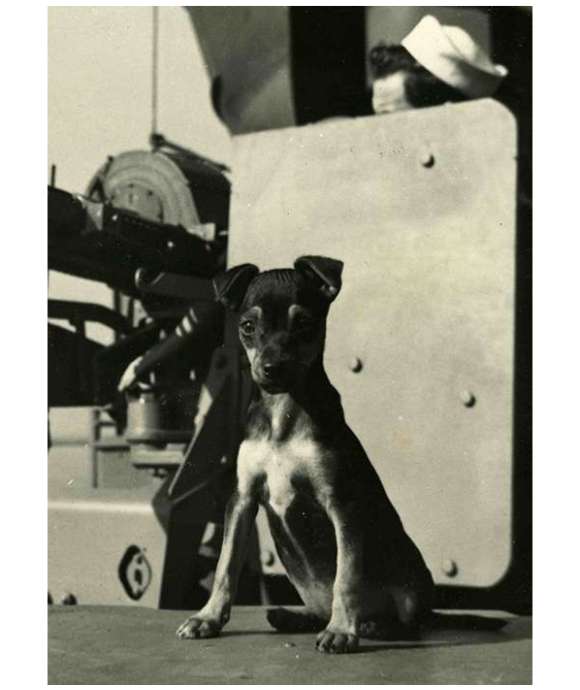
Best Friends Forever
During World War II, soldiers, Marines, and sailors alike would rescue animals they found in bombed-out houses, abandoned towns, docks, and beaches. These pups became companions, mascots, rat catchers, and buddies to their rescuers.
Toni M. Kiser
Toni is a graduate of the George Washington University’s Masters in Museum Studies Program and the author of Loyal Forces: American Animals in WWII and the co-editor of Museum Registration Methods, 6th Edition.
Cite this article:
MLA Citation:
APA Citation:
Chicago Style Citation:
